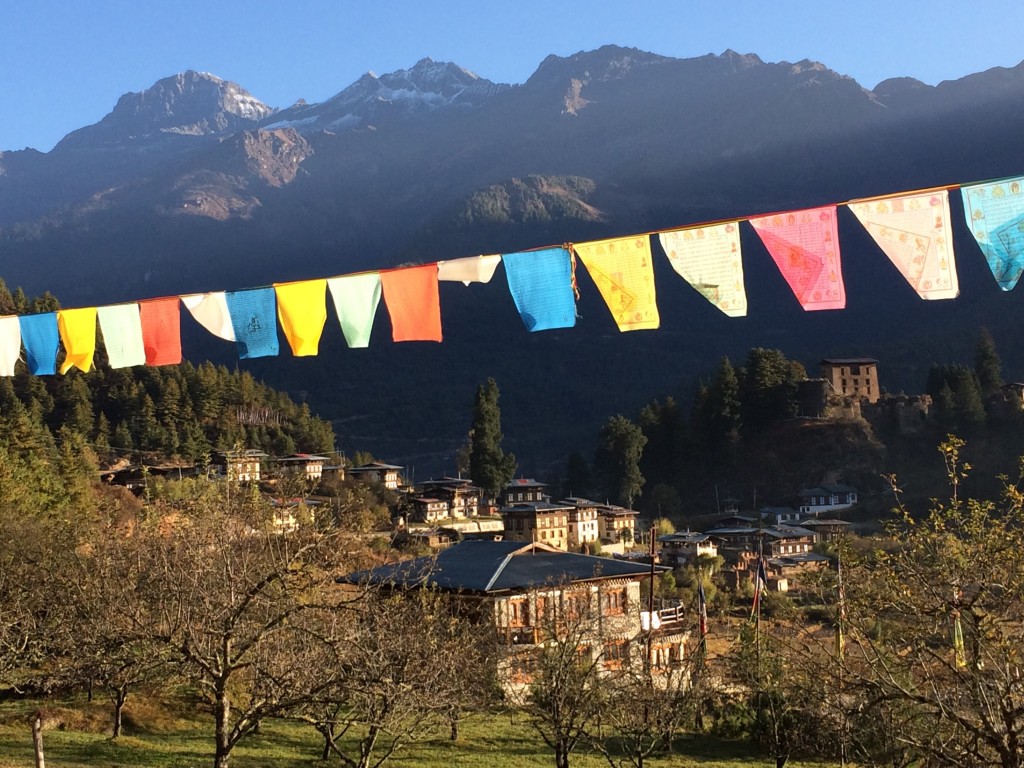How happy is Bhutan?
According to the 2015 Gross National Happiness (GNH) survey, 43,4% of the Bhutanese are considered happy.
This figure is the outcome of the survey by the Centre for Bhutan Studies and GNH research for 2015. During the survey, researchers interviewed 7.153 respondents, asking them 148 questions each to distill their GNH. The number came about via a complex methodology, which is about a lot more than just asking people about their life satisfaction.
How are people happy?
- 8.4% of Bhutanese are ‘deeply happy’ (or scoring over 77% of the weighted indicators), against 8.3% in the 2010 survey.
- 35.0% are ‘extensively happy’ (score of 66-76%), going up from 32.6% in 2010
- 47.9% are ‘narrowly happy’ (score of 50-65%). In 2010, this group of narrowly happy people was larger, at 48.7%
- Only 8.8% are considered ‘unhappy’ (below 50%) in 2015, while in 2010, 10.4% were unhappy.
This shows a small increase of GNH between 2010-2015. But as Bhutanese Prime Minister Tshering Tobgay said when presenting the results during the GNH conference, we cannot really interpret what this increase means:
“Is this [increase in GNH] fast or slow? We don’t know.”
Some of the other outcomes:
Urban up, rural more slowly
- People are happier in urban areas and the improvement is stronger in urban areas than in rural areas (the survey is designed to be representative for both the urban and rural area in every of Bhutan’s 20 districts).
- This is quite remarkable given the quick modernisation and urbanisation. As CBS researcher Thsoki Zangmo told me, Bhutanese living in cities score better on living standard and education, but worse on community and cultural indicators. This might suggest that the departure of people to the city affects community life in rural place of origin more than in the city, the destination.
- But these findings are provisional – the CBS will publish more detailed analysis next year. And, Tshoki says, we need more data points to really understand these factors. Therefore, the survey will be repeated every three of four years.
More happiness for everybody
- Roughly, improvements seem to be equalising: improvements are stronger under disadvantaged groups (women, elders, uneducated, and farmers). However, the survey design is not representative so these findings are indicative
Smaller downs, bigger ups
- Confusingly, no less than 14 individual domains and indicators show decreases. However, these are more than offset by (larger) increases in 11 indicators. Roughly, ‘harder’ domain as living standards and health improve, while ‘softer’ ones like community vitality and psychological well-being decrease.
Dreaded government offers good services
- A final remarkable finding is that the young Bhutanese democracy – established 2008 – quickly has created a complex relation with politics. As Prime Minister Tobgay didn’t shy away from mentioning, the perception of government is down by 48 percentage points. Both Tobgay and the researchers contributed that to the euphoria about the new democracy resulting in a high score in 2010, whilst electoral bickering in 2013 may have reduced the number in the 2015 survey.
- At the same time, however, the satisfaction with government services has increased by 20 percentage points. In short, Bhutanese are very satisfied with public services delivered by a dreaded government!

